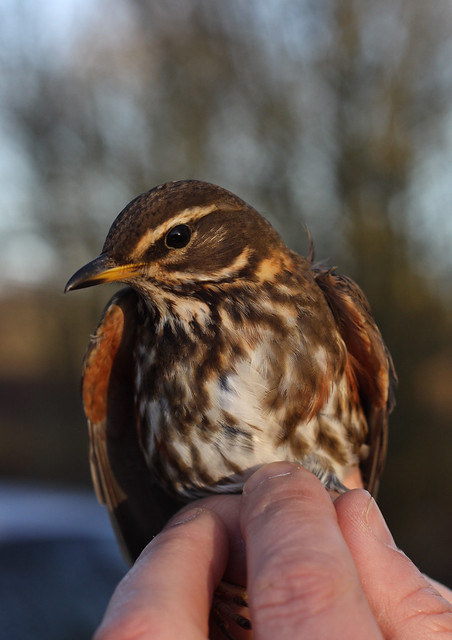 |
| Boy's Wood, Dorset |
This April certainly did not disappoint either. With a mixture of warm temperatures, bright sunshine and occasional showers, the plant life has quite literally bloomed! The bluebell woods behind my house are looking stunning, possibly the best I have ever seen them. There are a good amount of Wood anemone and Lesser celandine still holding on too.
Butterflies and moths have been enjoying the warmer, dry days and nights. I saw my first holly blue, green-veined white, orange tip and speckled wood of the year this month. I've also noticed a lot of brimstone butterflies (see below). These butterflies hibernate as an adult over winter so appear again on the warm, sunny days of Spring.
I have managed to put the moth trap out a fair few times in the last month. For those of you unaware of moth trapping, it's a fun and easy way of recording what moths are in a particular area. The trap is essentially a box full of egg boxes with a bright light over the top. Moths are attracted to the light, fall in to the box and tuck themselves away within the egg boxes.
April produced some exciting finds for my garden. Some of the prettiest had to be angle shades, purple thorn, muslin moth, lunar marbled brown, dark sword-grass and nut-tree tussock. The least common was probably this Scarce Prominent - a 'local' moth, meaning it is common but only in particular areas, that inhabits mature birch woodland.
Butterflies and moths have been enjoying the warmer, dry days and nights. I saw my first holly blue, green-veined white, orange tip and speckled wood of the year this month. I've also noticed a lot of brimstone butterflies (see below). These butterflies hibernate as an adult over winter so appear again on the warm, sunny days of Spring.
 |
| Female Brimstone nectaring |
I have managed to put the moth trap out a fair few times in the last month. For those of you unaware of moth trapping, it's a fun and easy way of recording what moths are in a particular area. The trap is essentially a box full of egg boxes with a bright light over the top. Moths are attracted to the light, fall in to the box and tuck themselves away within the egg boxes.
April produced some exciting finds for my garden. Some of the prettiest had to be angle shades, purple thorn, muslin moth, lunar marbled brown, dark sword-grass and nut-tree tussock. The least common was probably this Scarce Prominent - a 'local' moth, meaning it is common but only in particular areas, that inhabits mature birch woodland.
.JPG) |
| Scarce Prominent |
Birds have been extremely busy in the garden too. In fact as I am writing this blog there is a female chaffinch fluttering around my windowsill collecting up spiders and bugs caught in their cobwebs, there's chaffinch, collared dove and goldfinch calling in the bushes, and house sparrows are collecting up feathers in the garden.
No sign of chicks yet but I'm almost certain that there's dunnock, wren, great tit, wood pigeon, greenfinch, house sparrow, and collared dove nesting in the garden so fingers crossed it won't be long now!
An odd sighting for the garden though was this stock dove - I've never seen one before so I was quite excited to see one just a few metres away from my window!
No sign of chicks yet but I'm almost certain that there's dunnock, wren, great tit, wood pigeon, greenfinch, house sparrow, and collared dove nesting in the garden so fingers crossed it won't be long now!
An odd sighting for the garden though was this stock dove - I've never seen one before so I was quite excited to see one just a few metres away from my window!
.JPG)
.JPG)




.JPG)

